10 Indigenous Gardening Practices by Season
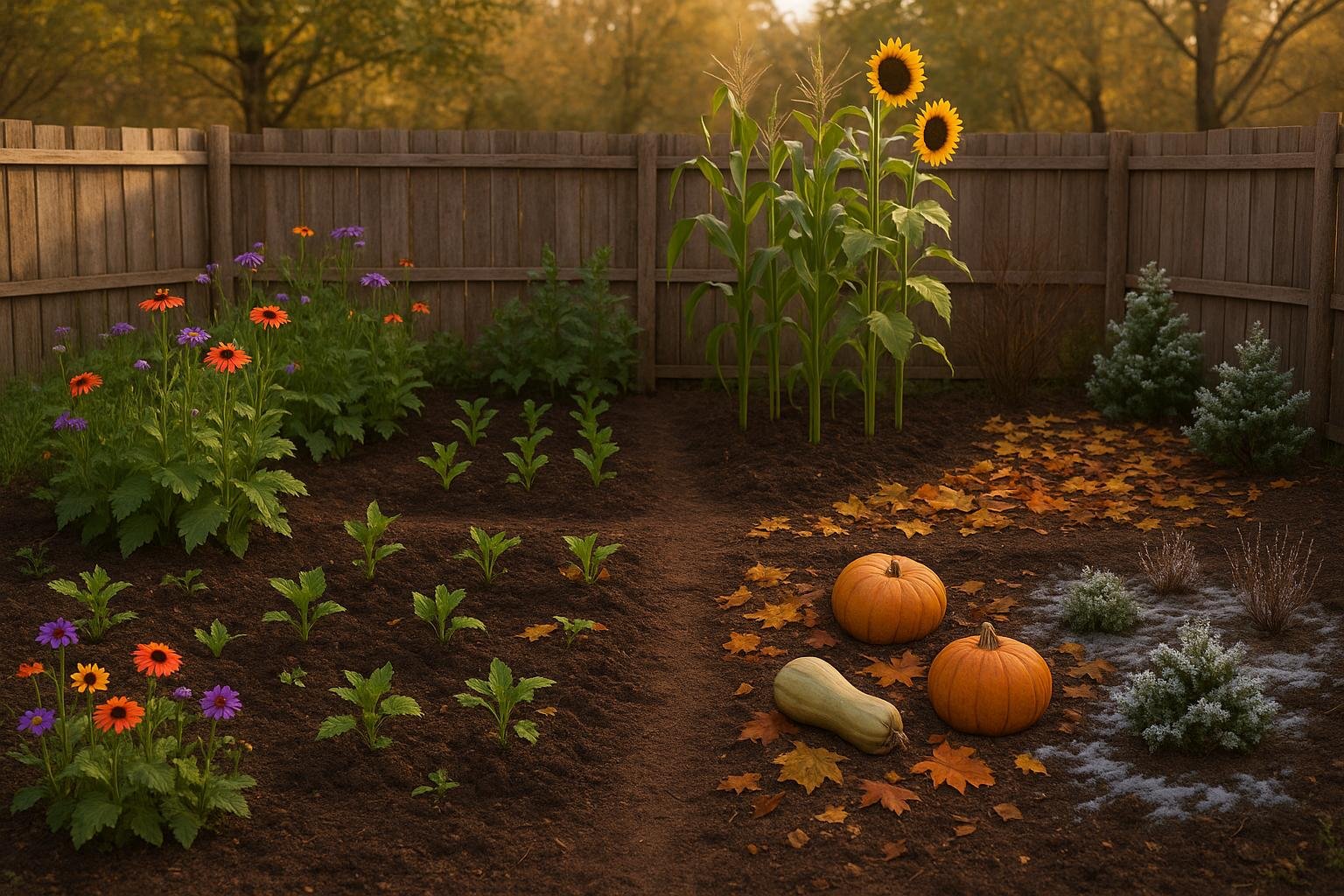
Want to garden in harmony with nature? Indigenous gardening practices offer time-tested methods to boost plant health, conserve resources, and align with seasonal cycles. Here’s a quick overview of the techniques covered in this article:
- Spring: Use the Three Sisters method (corn, beans, squash), raised mounds for drainage, and divide perennials like milkweed and ramps.
- Summer: Focus on rain-season planting, water-efficient ground covers, and companion planting.
- Fall: Harvest crops, save seeds, and prepare for winter.
- Winter: Let the land rest and learn from oral traditions about plant care.
- All Seasons: Follow moon phases for planting and harvesting.
These methods are rooted in Indigenous knowledge and can be adapted to modern gardens to improve soil health and biodiversity. Ready to start? Dive into the details!
Mastering the Seasons| Native American Phenology and the Three Sisters Planting Method #shorts

1. Three Sisters Garden Method (Spring)
The Three Sisters method, introduced by Indigenous peoples, combines corn, pole beans, and squash to make the most of garden space while aligning with natural processes. Here's how it works:
-
Corn Planting
Start by planting corn seeds in mounds spaced 4 feet apart. As the corn grows, it will serve as a natural trellis for the beans. -
Adding Beans
Once the corn begins to sprout, plant pole bean seeds around each stalk. These beans help enrich the soil by adding nitrogen, which benefits all the plants. -
Squash Comes Last
After the beans are established, plant squash seeds nearby. The broad squash leaves act as a natural mulch, helping to retain moisture and block out weeds.
| Plant Type | Spacing | Planting Depth | Best Planting Time |
|---|---|---|---|
| Corn | 4 ft apart | 1–2 inches | Early spring |
| Pole Beans | Around corn | About 1 inch | Once corn starts growing |
| Squash | Between mounds | Around 1 inch | After beans are growing |
This method works best in full sun with well-draining soil. Adding aged compost can further improve plant health and productivity. It's a great way for modern gardeners to efficiently use their garden space while promoting healthy soil.
2. Natural Growth Timing (Spring/Fall)
Traditional methods align planting and harvesting with nature's seasonal changes. When the soil softens, wildflowers bloom, and temperatures rise, it’s time to plant. In the fall, light frosts, vibrant leaves, and animal behaviors signal it’s time to harvest and prepare for winter.
Instead of relying on fixed dates, this approach adjusts to local conditions, ensuring better germination and healthier plant growth. Today, tools like local weather reports and soil monitors complement these time-tested practices, helping gardeners make informed decisions. These methods also prepare the ground for practical improvements, such as raised earth mounds.
Up next: how raised earth mounds can improve spring planting.
🚀 Ready to Reinvent Your Garden?
Join thousands of homeowners who have transformed their gardens using our AI design tool. Upload one photo to explore endless possibilities.
Get your AI garden designs →3. Raised Earth Mounds (Spring)
In spring, raised earth mounds help with better soil drainage and speed up soil warming. This method is tailored to local soil types and rainfall levels, making it easier to manage water runoff and support early-season plant growth. While traditional methods of building these mounds vary across regions, the primary goal has always been the same.
Today, gardeners can adapt raised mound techniques to fit their specific space and climate needs. Whether you're working with a large yard or a small urban garden, this time-tested method offers practical solutions for creating productive spring gardens.
4. Soil Protection Methods (Spring)
Traditional methods have long been used to keep spring soil in good condition. For instance, applying a layer of dried plant mulch helps protect the soil while slowly adding organic matter.
Crop rotation was another practice used by Indigenous gardeners to maintain soil nutrients and reduce the spread of diseases. They also relied on dried plant mulch to conserve moisture and prevent erosion. Today, many gardeners continue these practices by using locally sourced mulches and rotating crops to keep soil fertile during the spring. These essential steps set the stage for other techniques, such as dividing plants in spring.
5. Spring Plant Division (Spring)
Indigenous communities have long aligned their plant division practices with the rhythms of the seasons. In early spring, as the ground begins to thaw, Haudenosaunee gardeners divide perennial plants. Natural signs, like the flow of maple sap, signal the perfect time for this process.
Different Indigenous groups have their own traditions for selecting plants to divide. For instance, the Cherokee Nation divides black raspberry plants once their new shoots grow to 6–8 inches. Other plants commonly divided include:
| Native Plant | Optimal Timing | Traditional Use |
|---|---|---|
| Purple Coneflower (Echinacea purpurea) | Every 3–4 years | Immune support remedies |
| Milkweed (Asclepias syriaca) | Early spring | - |
| Wild Ramps (Allium tricoccum) | Early spring (before full leaf emergence) | Food source |
| Jerusalem Artichoke (Helianthus tuberosus) | When soil becomes workable (around 45–55°F) | Food source |
These precise timings and plant choices are key to promoting healthy growth and ensuring long-term garden vitality.
"The Native American Food Sovereignty Alliance reports communities using spring division to propagate 78% of their medicinal plants. In the Sioux Nation's program, divided elderberry yields 30% more fruit than seed-grown plants after 3 years."
The Meskwaki Nation has also shown how traditional practices can serve modern needs, pairing divided bee balm with squash to naturally repel pests and improve companion planting.
Aftercare is critical for the success of divided plants. Indigenous gardeners often use willow-bark tea to water new divisions, as it contains natural rooting hormones. They also apply a 2–3 inch layer of oak leaf mulch to maintain balanced soil pH and spread crushed eggshells around plants to provide calcium and deter slugs. These simple, natural methods result in survival rates of about 85%.
In 2020, the Kaibab Paiute Tribe worked with Pipe Spring National Monument to divide native yarrow and purple coneflower. This effort led to the creation of seven educational gardens while preserving the genetic heritage of their medicinal plants.
The Ojibwe have demonstrated the ecological advantages of strategic plant division by using native grasses to control erosion. Research indicates this technique can reduce soil loss by up to 40% compared to traditional seed scattering.
6. Rain Season Planting (Summer)
Indigenous communities have developed techniques to make the most of summer rainfall. One effective approach involves creating shallow basins or depressions that direct water to plant roots, ensuring seeds get the moisture they need to grow. This method allows for planting decisions to align with natural weather patterns.
Gardeners often waited for rainclouds to appear before planting drought-tolerant crops, timing their efforts to match the season's rainfall.
In summer gardens, practices like companion planting and using natural ground covers help retain moisture, distribute water more evenly, and protect soil health during the heat. These methods highlight the deep understanding Indigenous communities have of working in harmony with nature.
sbb-itb-4d6a8dd
🎨 Visualize Your Dream Garden Today!
Transform any outdoor space into a professional landscape design in minutes. Just upload a photo, choose your style, and let our AI do the rest.
Start your garden transformation now →7. Plant-Based Ground Cover (Summer)
Plant-based ground covers are a time-tested method for protecting soil and supporting biodiversity, especially during the summer rain season. Indigenous gardeners have long relied on these covers to maintain healthy soil and promote ecological balance.
In the Pacific Northwest, tribes cultivated camas (Camassia quamash) to protect soil while also using it as a food source. In drier regions, drought-tolerant plants like Oregon sunshine (Eriophyllum lanatum) and yarrow (Achillea millefolium) can form dense mats, covering up to 95% of the soil during the hottest months.
"The Scholls Valley Native Nursery study found native ground covers increased pollinator visits by 300% compared to bare soil, while suppressing 90% of invasive weeds."
Research highlights the multiple benefits of native ground covers: they can increase pollinator activity by 300%, suppress invasive weeds by 90%, and lower surface temperatures by 9–14°F. This cooling effect is especially valuable in urban areas prone to heat buildup.
One effective planting method, the 'dynamic filler' technique, combines structural plants like Festuca roemeri with self-sowing species such as California poppy (Eschscholzia californica). These are spaced 12–18 inches (30–45 cm) apart to ensure continuous coverage.
A standout example is Atlanta's Nurture Native Nature project. By replacing invasive English ivy with native golden ragwort (Packera aurea), the project achieved 90% weed suppression within two growing seasons and attracted 14 new pollinator species.
Choosing ground covers suited to local conditions eliminates the need for irrigation, conserves water, and improves resilience to climate extremes. These plants also double water infiltration rates and enhance nutrient cycling. Combining traditional Indigenous practices with modern insights offers a sustainable approach to summer gardening.
8. Fall Seed Storage (Fall)
Indigenous seed storage techniques play a key role in preserving biodiversity and aligning with local climates. By choosing seeds from the strongest and healthiest plants, communities have maintained a wide range of genetic diversity, which is essential for resilient agriculture. These practices naturally fit into the seasonal cycle, ensuring seeds are ready for future planting.
Key steps include:
- Collecting seeds from healthy, fully mature plants during fall
- Thoroughly drying seeds to prevent mold or decay
- Storing seeds in a cool, dark, and dry environment
- Using airtight, labeled containers to keep seeds safe from moisture and pests
These proven methods not only ensure seeds stay viable for planting but also help preserve cultural traditions and agricultural knowledge.
9. Winter Plant Care Stories (Winter)
Indigenous oral traditions hold a wealth of knowledge about caring for plants during the winter months. These stories, shared across generations, provide guidance on handling seasonal challenges and respecting nature’s rhythms. They highlight the significance of plant dormancy and offer tips on using locally sourced materials to protect plants from the cold. Additionally, these tales shed light on how lunar cycles can impact gardening throughout the year.
10. Moon-Based Harvest Times (All Seasons)
For generations, Indigenous communities have observed the connection between lunar cycles and gardening. Many rely on the moon's phases to decide the best times for planting and harvesting. These practices, rooted in ancestral knowledge, align well with modern gardening techniques.
🌺 Professional Garden Design in Minutes!
Stop wondering what your garden could look like. Upload a photo and let our AI show you 50+ professional design possibilities instantly.
Transform your garden now →Modern Garden Planning Tools
Indigenous gardening wisdom has influenced generations, and now digital tools are making it easier to apply these time-tested methods. These tools help gardeners align traditional seasonal practices with local conditions and climate patterns, ensuring that the rhythms of nature remain central to garden planning.
AIGardenPlanner's AI Plant Advisor is one such tool, offering location-specific recommendations that complement Indigenous practices. It provides detailed growing guides and climate-based schedules, helping gardeners with tasks like planting at the right time, planning companion plants, scheduling harvests, and maintaining soil health year-round.
The platform also includes visualization tools for designing traditional planting arrangements. For example, you can experiment with layouts for techniques like the Three Sisters method or raised mounds before you start planting. With over 50 garden styles to choose from, you can create designs that honor Indigenous practices while meeting modern needs.
Key Features
- Climate-Based Planning: The platform uses your location and climate zone to recommend the best planting times, syncing with natural seasonal cycles and traditional timing.
- Native Plant Integration: The AI Plant Advisor identifies native plants that have historically thrived in your area, supporting both traditional gardening methods and local ecosystems.
- Maintenance Guidance: Detailed care instructions follow natural growth patterns and seasonal changes, reflecting Indigenous approaches to plant care.
AIGardenPlanner offers two subscription options: the Starter plan at $19/month, which includes 50 AI photos, and the Premium plan at $99/month, offering 500 AI photos.
Conclusion
Indigenous gardening techniques continue to offer valuable insights for today’s gardens. Practices like spring planting and moon-phase harvesting reflect generations of knowledge that emphasize working with nature.
If you’re interested in exploring these methods, here are some ways to get started:
- Visit local Indigenous cultural centers for workshops on traditional agriculture.
- Participate in community gardens that use Indigenous growing techniques.
- Reach out to agricultural extension offices for advice on native plants and traditional growing patterns.
Tools like AIGardenPlanner combine this ancestral knowledge with modern technology, offering climate-based planning and native plant suggestions that align with these time-tested methods. These digital resources make it easier to integrate Indigenous principles into everyday gardening while respecting their roots.
Start small by adopting techniques suited to your local environment. Whether it’s using the Three Sisters planting method or harvesting according to lunar cycles, these approaches can help create gardens that thrive while staying in sync with the natural world.
FAQs
How can I incorporate Indigenous gardening practices into a small urban garden?
Incorporating Indigenous gardening practices into a small urban garden is both rewarding and achievable. Start by focusing on seasonal planting and harvesting techniques that align with your local climate. For instance, prioritize native plants that thrive naturally in your area, as they require less maintenance and support local ecosystems.
To make the process easier, consider using tools that provide personalized garden designs and plant recommendations based on your location and preferences. This can help you create a sustainable and efficient layout, even in limited spaces. Additionally, practice mindful land care by using composting, rainwater collection, and companion planting to nurture the soil and reduce waste.
By blending traditional wisdom with modern tools, you can create a thriving urban garden that honors Indigenous practices while fitting seamlessly into your space.
What are the advantages of using the Three Sisters planting method over conventional gardening techniques?
The Three Sisters planting method, an Indigenous agricultural practice, offers several unique benefits compared to conventional techniques. By planting corn, beans, and squash together, this method creates a natural symbiosis where each plant supports the others. Corn provides a sturdy structure for beans to climb, beans enrich the soil with nitrogen, and squash acts as ground cover, reducing weeds and retaining soil moisture.
This approach not only promotes healthier soil and higher yields but also reduces the need for synthetic fertilizers and pesticides. Additionally, the Three Sisters method fosters biodiversity, resilience, and sustainability in your garden, reflecting centuries of ecological wisdom.
How do moon phases play a role in Indigenous gardening practices for planting and harvesting?
Many Indigenous gardening traditions consider the moon’s phases to guide planting and harvesting. The waxing moon (from new to full) is often associated with growth and is seen as the best time for planting crops that grow above ground, like leafy greens and fruits. The waning moon (from full to new) is linked to rest and is ideal for planting root crops, pruning, or preparing the soil.
These practices are rooted in the belief that the moon influences water movement in the soil and plants, similar to its effect on ocean tides. By aligning gardening activities with lunar cycles, Indigenous gardeners aim to work in harmony with nature’s rhythms, promoting healthier plants and more abundant harvests.
Related posts
Related Articles
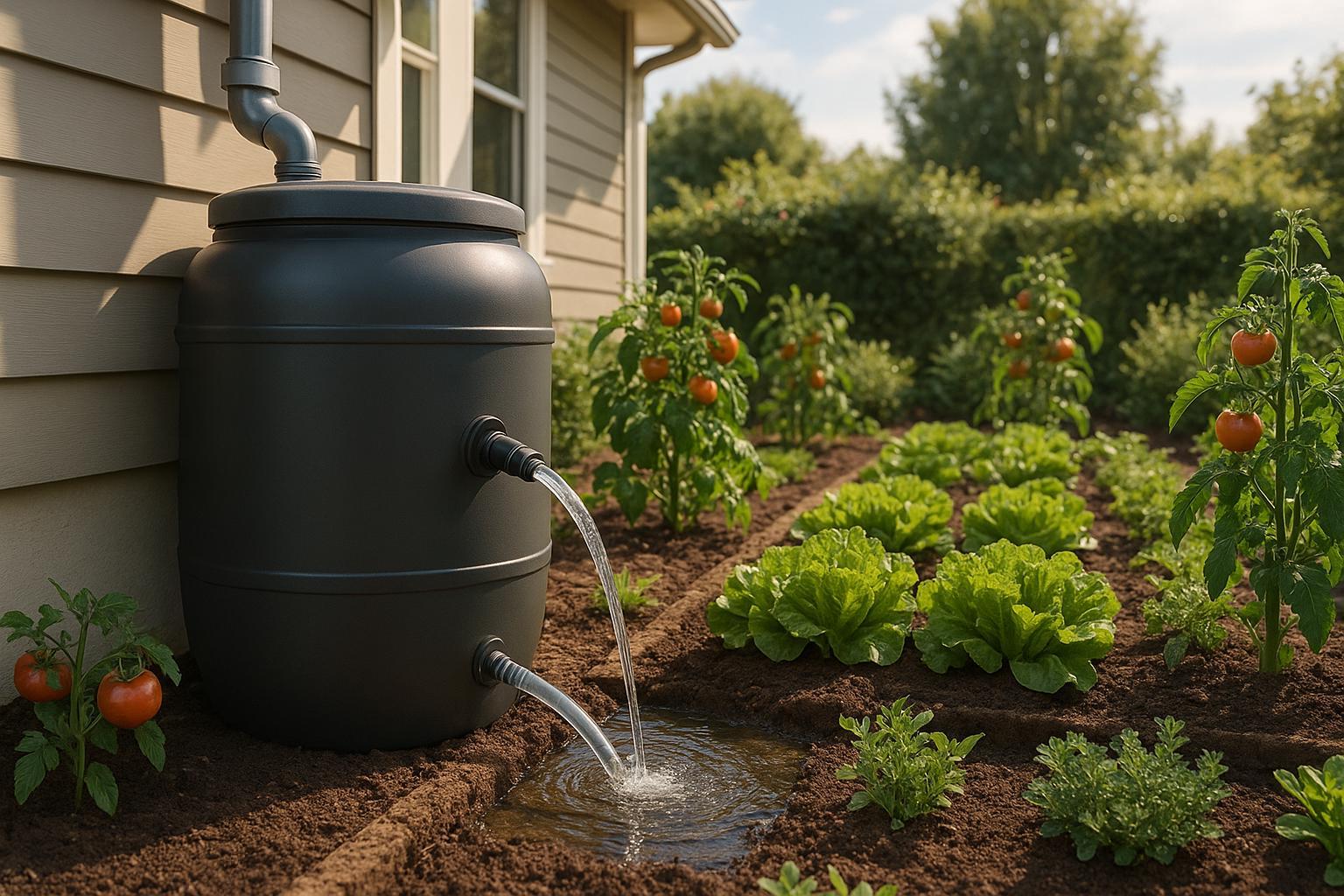
Ultimate Guide to Rainwater Filtration for Gardens
Learn how to implement an effective rainwater filtration system for your garden, enhancing plant growth while conserving water and reducing costs.

The Ultimate Guide to Using Pine Shavings as Mulch
Discover the benefits of using pine shavings as mulch, how to apply them properly, and important considerations for your garden. Find out how pine shavings can enhance your gardening experience!
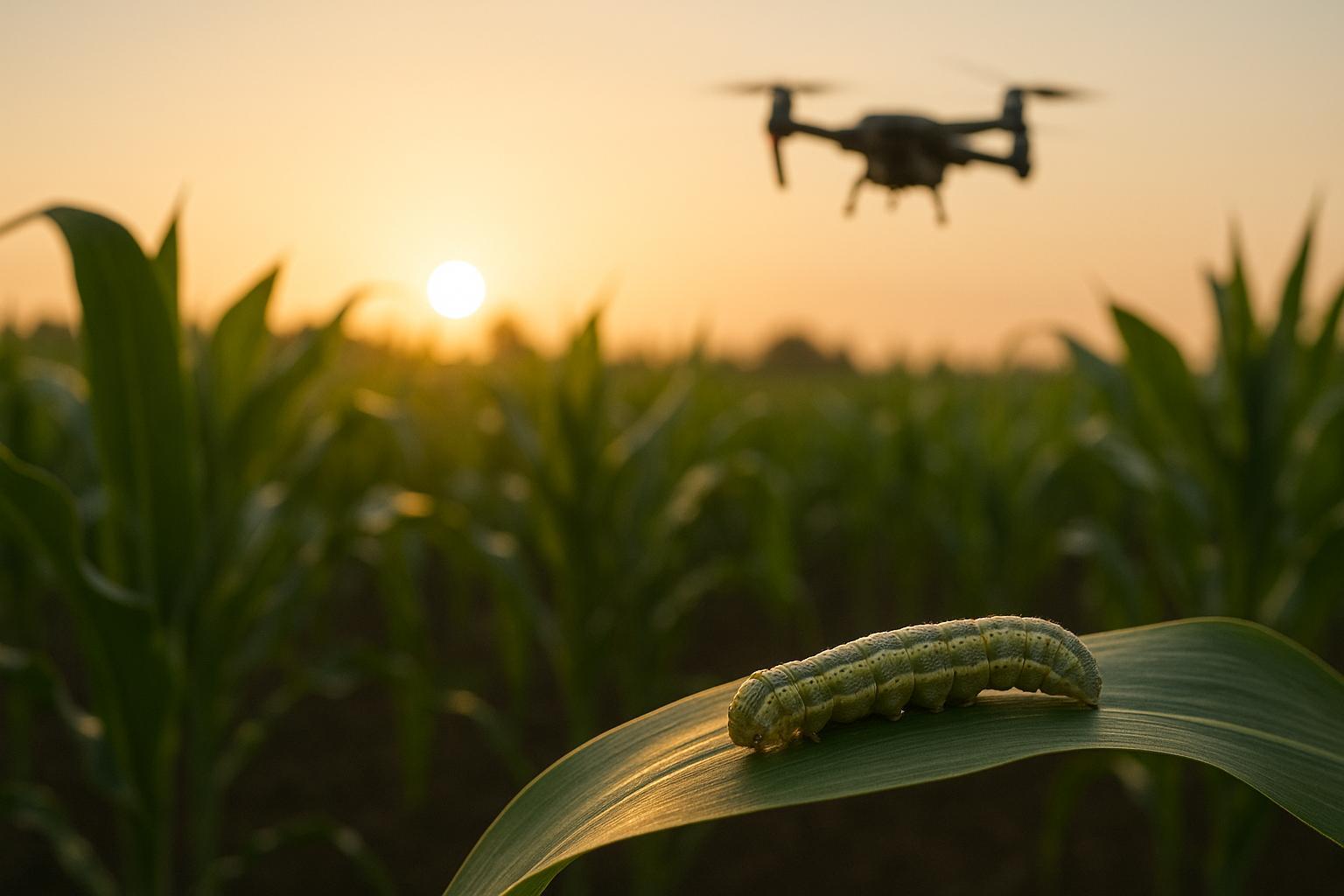
How Machine Vision Tracks Pest Lifecycles
Explore how machine vision technology revolutionizes pest management through early detection, lifecycle tracking, and sustainable practices.
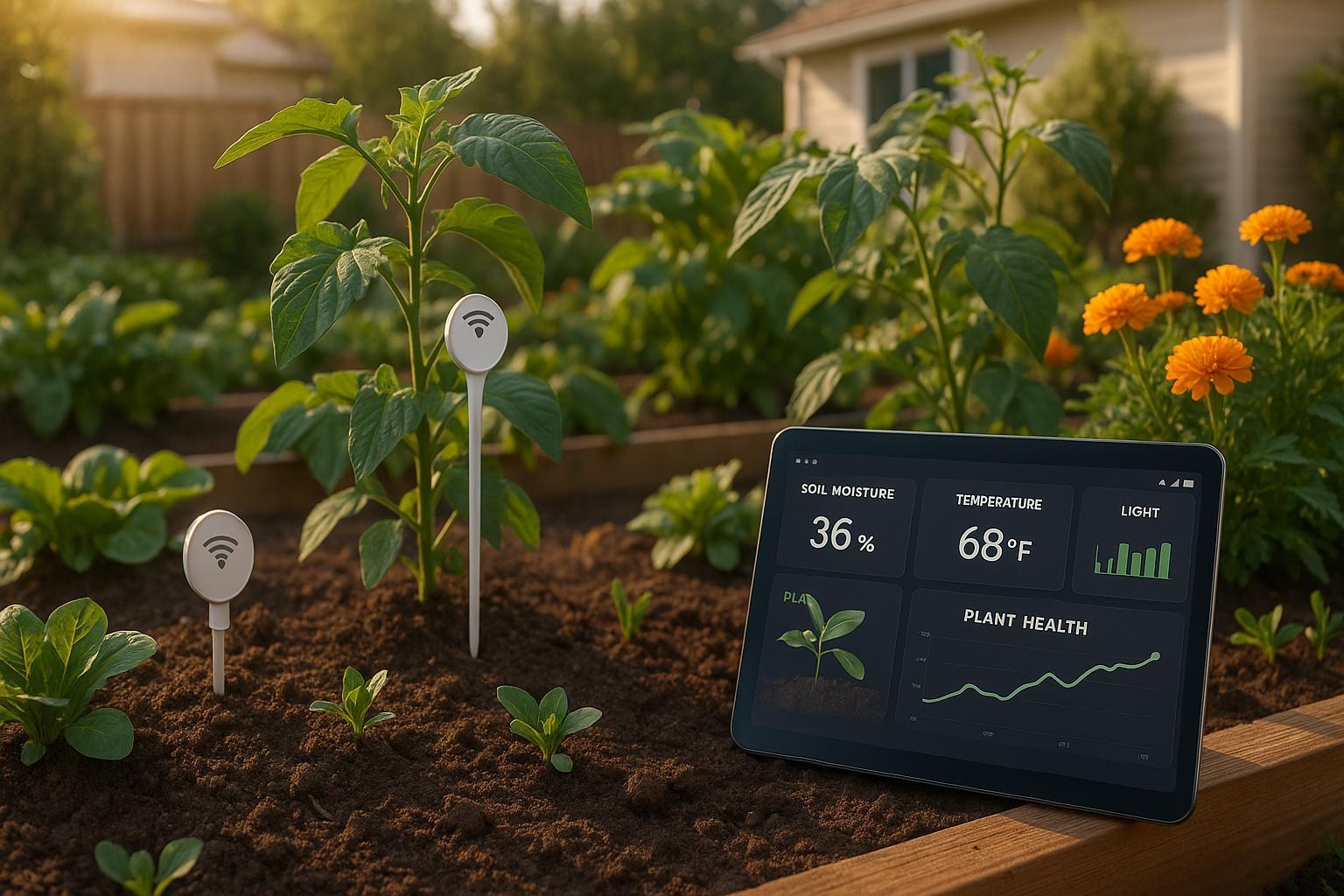
IoT Data Collection for Climate-Specific Gardening
Explore how IoT technology revolutionizes gardening by optimizing resource use, predicting diseases, and enhancing plant health for sustainable practices.
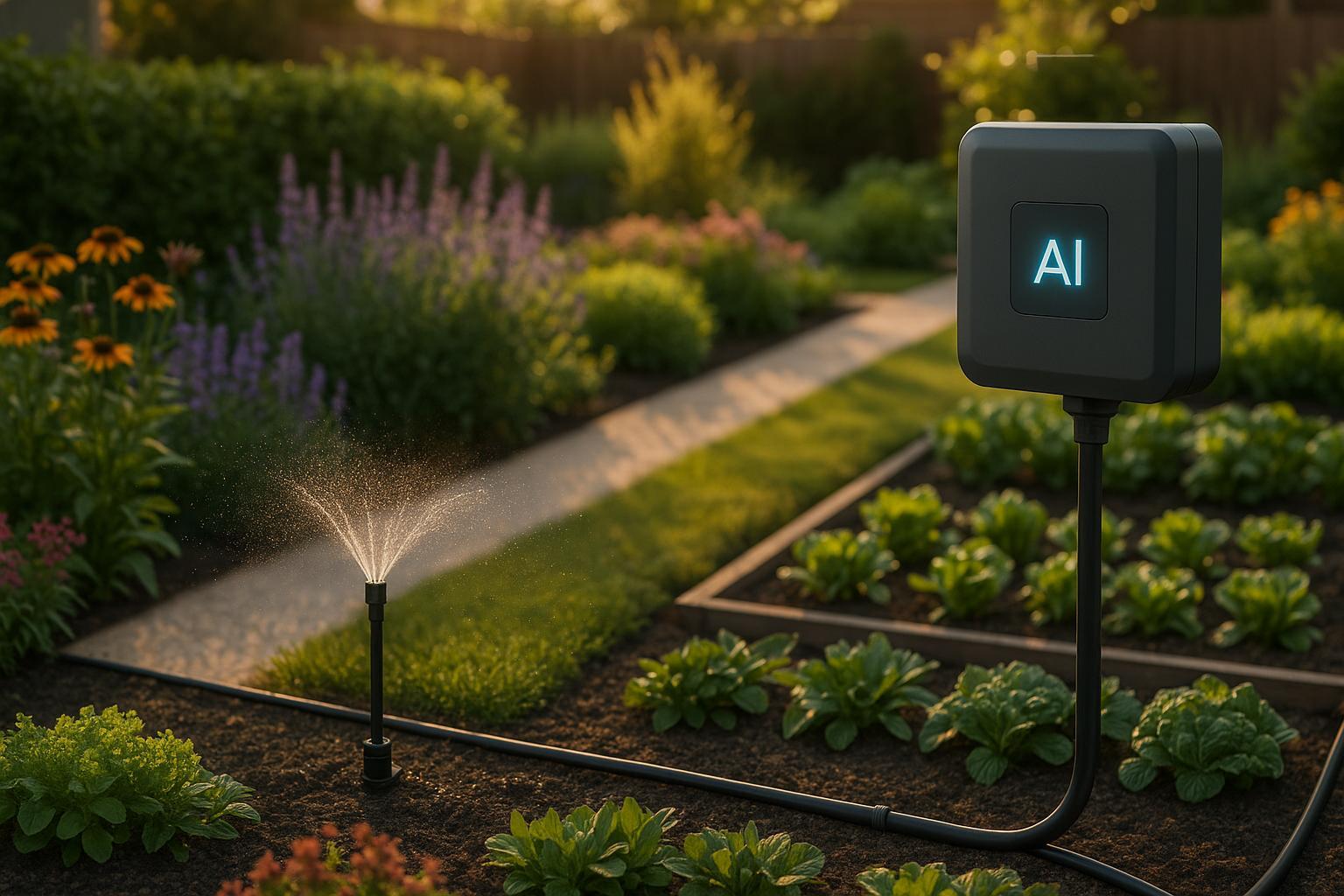
How AI Improves Garden Water Allocation
Explore how AI-driven irrigation systems optimize water usage, enhance plant health, and reduce costs in garden management.
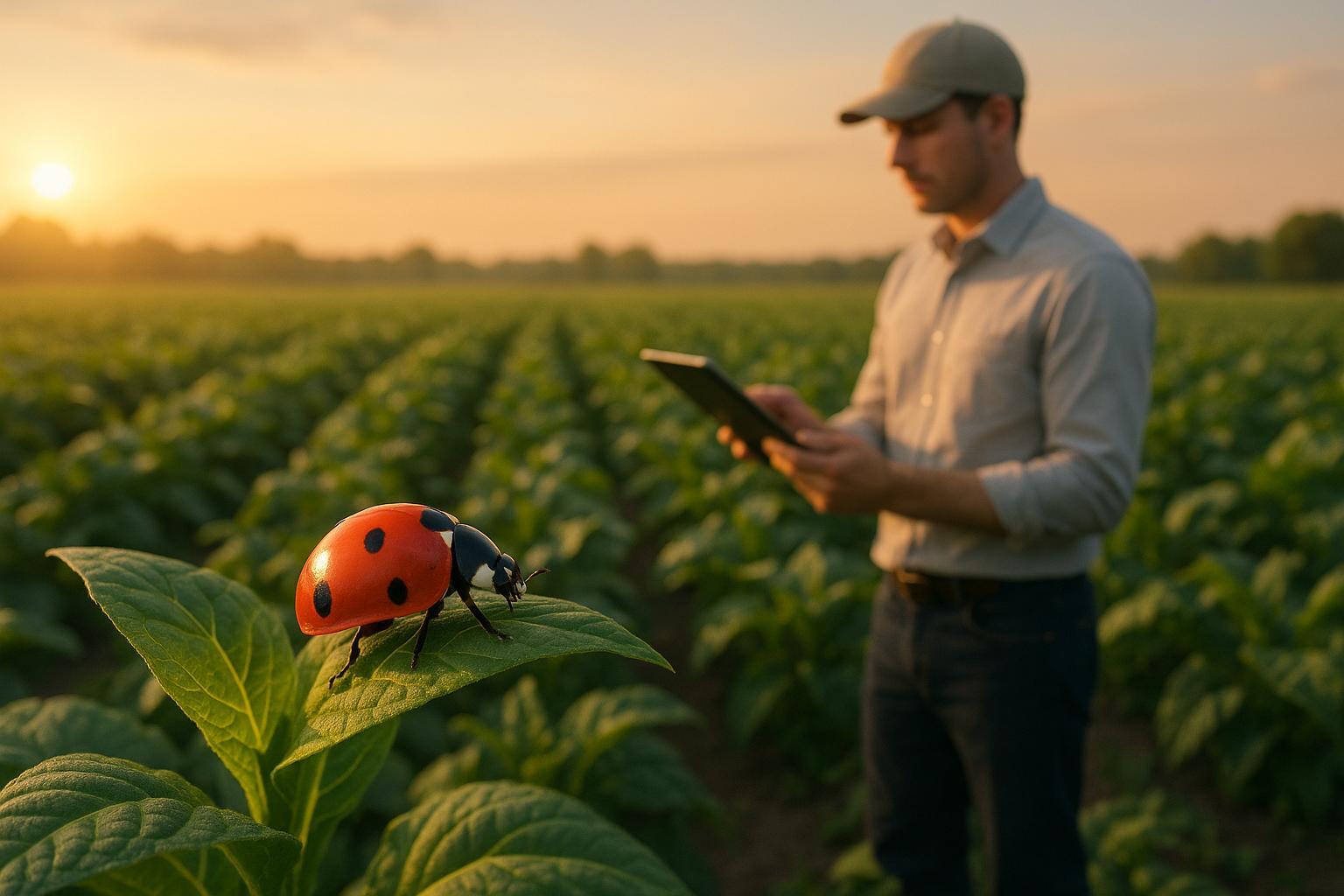
How to Measure Biological Pest Control Success
Learn effective methods to measure the success of biological pest control, from key strategies to monitoring tools and metrics.